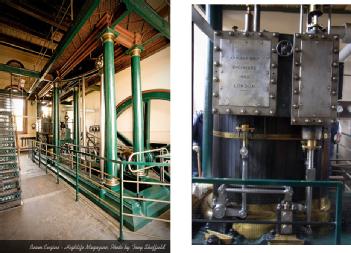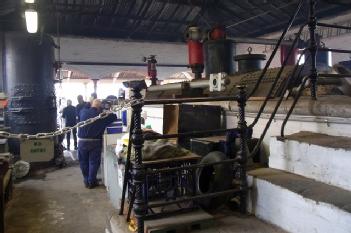
Goulburn Historic Waterworks Museum |
2580 Goulburn, Australia (New South Wales) |
|
| Address |
Marsden Weir off Fitzroy Street
|
| Floor area | unfortunately not known yet |
Steam engines/generators/pumps
- Architecture
- Historic Engineering Landmarks
|
Opening times
|
TEMPORARY OPENING HOURS FROM APRIL 2023: Please be advised that due to construction work the Waterworks grounds and museum will be: OPEN – 10 am-4 pm on weekends and public holidays (except Good Friday) CLOSED – on weekdays UNTIL FURTHER NOTICE | ||||
|
Status from 04/2023
|
We don't know the fees. | ||||
| Contact |
|
||||
| Homepage | www.goulburnwaterworks.com.au | ||||
| Location / Directions |
Goulburn is a regional city in the Southern Tablelands of the Australian state of New South Wales, approximately 195 kilometres south-west of Sydney, and 90 kilometres north-east of Canberra. Goulburn is approximately two hours' drive from Sydney via the Hume Highway, or a one-hour drive from Canberra via the Federal and Hume Highways. Goulburn railway station is the southern terminus of the Southern Highlands Line which reaches from Campbelltown and is part of the NSW TrainLink intercity passenger train system. Most services on the line terminate at Moss Vale, some 65 km north-east, meaning Goulburn sees limited passenger service. The station is also served by the long distance Southern XPT and Xplorer trains between Sydey and Griffith, Canberra and Southern Cross railway station in Melbourne. All services are operated by NSW TrainLink. Goulburn Pumping Station is a heritage-listed former municipal water supply system and now museum at Wollondilly River. To Marsden Weir, off Fitzroy Street, Goulburn. Turn into driveway next to “Gehl Garden Centre” at Rotary Park. |
| Description | From Wikipedia, the free encyclopedia: The facility is the only complete, workable beam engine powered municipal water supply left in its original location in the Southern Hemisphere. It now operates as the Goulburn Historic Waterworks Museum. History The steam-operated pumping station was built in 1885 on the banks of the Wollondilly River at Marsden Weir, providing Goulburn's first reticulated water supply. It became operational in January 1886. The pumphouse still contains the original Appleby Bros. Beam Engine pump and Lancashire Boilers. The pumphouse was powered by timber - wood piles fired the boilers 24 hours a day, seven days a week. Before 1886 the residents of Goulburn would have collected water in tanks or wells, or purchased supplies from a carter. The demand of the growing city resulted in the Rivers and Harbours Board installing a waterworks on the Wollondilly River at Rocky Point powered by a steam operated beam engine. Water was pumped from the river to a filtration plant and reservoir, then gravity fed to residents of the city. Appleby Beam Engine The original 1883 Appleby Bros. steam engine situated inside the pumphouse was one of four installed in Pumphouses around NSW. The steam engine is known as a beam engine because of the large overhead rocking beam that transmits motion from the pistons to the cranks. This great beam engine, of the type first invented by Thomas Newcomen in 1712, is an example of the powerhouse that drove the Industrial Revolution. Originally designed for pumping water out of mines in the UK it was improved by Watt, Smeaton, Maudsley and other engineers of the steam age until it became a very efficient and reliable engine. Goulburn's Beam Engine 1883 The Goulburn Waterworks engine is of medium size and produces 120 horse power. It has compound cylinders and a jet condenser. The fly wheel is 5 metres in diameter and at 18 r.p.m. the pumps delivered 660,000 litres of water per hour. The two boilers that produce the steam that powers the engine, are located in the western wing of the building. Fired by wood or coal, they produce high temperature steam that is piped through to the beam engine in the central part of the building. Only one boiler would have been operational at any one time. The other being shut down for regular cleaning and maintenance. Steam from the boilers enters the valve chest on the cylinders from where it is transmitted to the cylinders by means of a valve mechanism. The action of the steam on the pistons causes them to reciprocate. Rods connect the pistons to the beam at one end, and to the crank at the other. This converts the "rocking" motion to rotary motion which makes the flywheel turn, giving a smooth and continuous action. By 1918 the beam engine had become obsolete when electric motors were installed. The Pumphouse The east wing of the building houses a horizontal steam engine, Hick Hargreaves engine now on display and operational on steaming days, and the early dynamo room with its electric pump. The Waterworks is notable not just for its historic steam engine, but for the elegant Victorian building that houses the beam engine and boilers. |
[dsp_museum_detail.cfm]
| Data Compliance | More Information |






